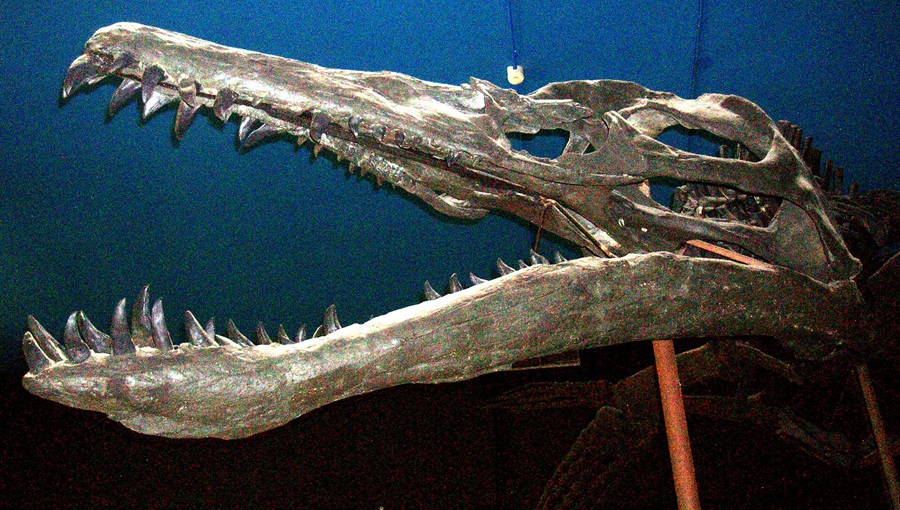
The skull of a pliosaur, a colossal sea monster that terrorized the oceans about 150 million years ago has been extracted from the cliffs of Dorset’s coast in England, the BBC reports.
The 2m-long fossil is one of the most complete specimens of its type ever discovered and is giving new insights into this ancient predator, which was a ferocious marine reptile.
Pliosaur discovery: Huge sea monster emerges from Dorset cliffs https://t.co/AHxdRWNZHM
— BBC News (World) (@BBCWorld) December 10, 2023
The Pliosaur skull is longer than most humans are tall
There isn’t a specimen anywhere else to match it, believes local paleontologist Steve Etches.
“It’s one of the best fossils I’ve ever worked on. What makes it unique is it’s complete,” he tells BBC News.
“The lower jaw and the upper skull are meshed together, as they would be in life. Worldwide, there’s hardly any specimens ever found to that level of detail. And if they are, a lot of the bits are missing, whereas this, although it’s slightly distorted – it’s got every bone present.
The skull is longer than most humans are tall, which gives you a sense of how big the creature must have been overall, the BBC says.
I got to meet a Pliosaur! https://t.co/7CdpzDAdhq pic.twitter.com/Yf0rPqVJNQ
— Steve Harris – BBC Radio Solent's Dorset Breakfast (@SteveHarrisDJ) December 10, 2023
Sea monster with 130 intimidating teeth
It adds that its 130 teeth, especially those at the front, are intimidating. Long and razor-sharp, they could kill with a single bite. But look a little closer – if you dare – and the back of each tooth is marked with fine ridges. These would have helped the beast to pierce the flesh and then quickly extract its dagger-like fangs, ready for a rapid second attack.
The pliosaur was the ultimate killing machine and at 10-12m long, with four powerful flipper-like limbs to propel itself at high speed, it was the apex predator in the ocean.
“The animal would have been so massive that I think it would have been able to prey effectively on anything that was unfortunate enough to be in its space,” Dr Andre Rowe from Bristol University tells the BBC.
“I have no doubt that this was sort of like an underwater T. Rex.”
Palaeobiologist Prof Emily Rayfield has already examined the large circular openings at the rear of the head. They tell her about the size of the muscles operating the jaws of the pliosaur, and the forces generated as its mouth snapped shut and crushed its prey.
At the top end, this comes out at about 33,000 newtons. For context, the most powerful jaws in living animals are found on saltwater crocodiles, at 16,000 newtons.
Meals would have included other reptiles such as its long-necked cousin, the plesiosaur, and the dolphin-like ichthyosaur – and fossil evidence reveals that it would have even feasted on other passing pliosaurs.
The name of the genus Pliosaurus, is derived from the Greek πλειων (pleion), meaning “more/closely”, and σαυρος (sauros) meaning “lizard”; it therefore means “more saurian”.
The name Pliosaurus was coined in 1841 by Richard Owen, who believed that it represented a link between plesiosauroids and crocodilians (considered a type of “saurian”), particularly due to their crocodile-like teeth.
Related: The Sea Monsters of Ancient Greek Mythology
See all the latest news from Greece and the world at Greekreporter.com. Contact our newsroom to report an update or send your story, photos and videos. Follow GR on Google News and subscribe here to our daily email!



